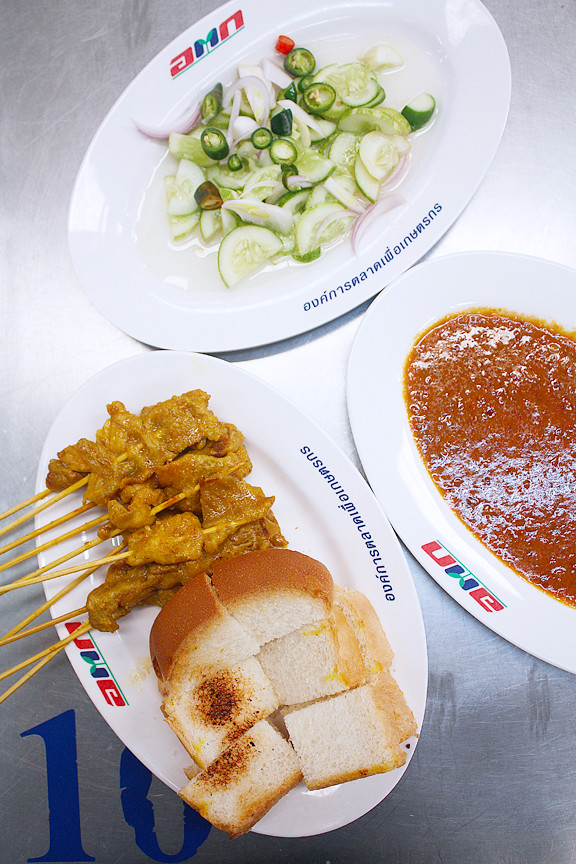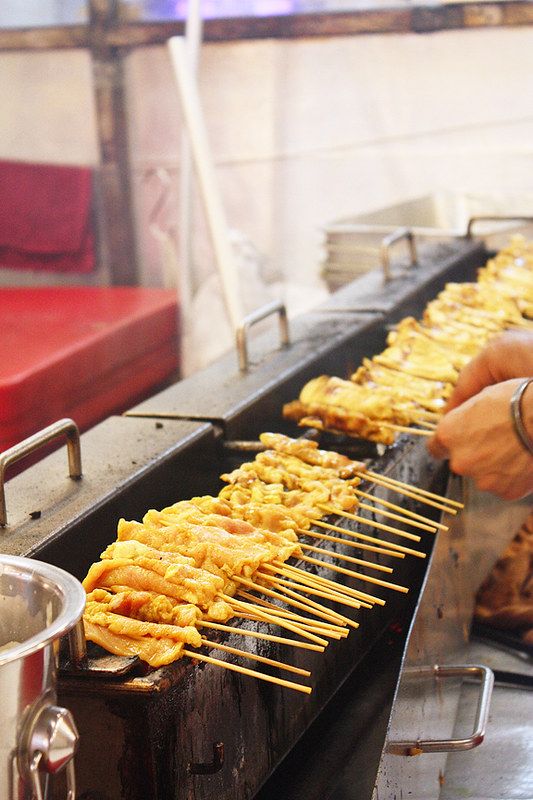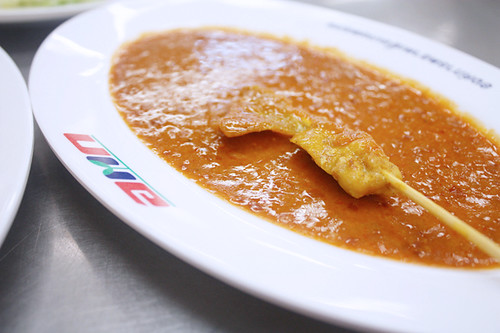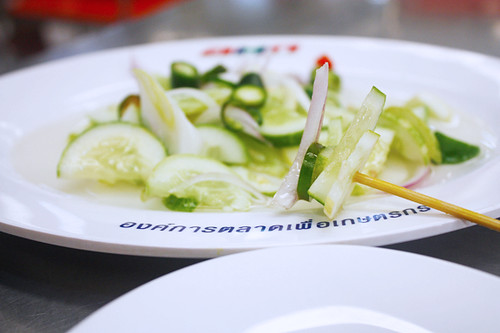
Not too long ago, as I was sitting all alone at table number 10 in the middle of one of my favorite places in all of Bangkok, Or Tor Kor Market, I thought of you.
Sure, I was eating alone, but, no, I wasn’t lonely. One cannot possibly feel lonely with a bag of mangosteens and a bag of durian nestling against one’s left hip — or right hip, for that matter. I was just thinking that you might be interested in how the Thai people eat their satay. I could be totally wrong about that, but I’m already four and a half sentences into this post and I’m not a quitter.
Disclaimer: there’s no canonized set of rules when it comes to eating satay in Thailand. Heck, there’s no canonized set of rules when it comes to eating anything anywhere. My role here is to report what’s usually done. Also, I’m a fan of personal freedom. Though I might avert my eyes when seeing someone eating Thai food with rice with a pair of chopsticks and firmly believe that it is a less than optimal way to enjoy Thai food, I will defend their right to eat that way.
So, anyway, in general this is how most Thai people eat their satay. Take it for what it’s worth.

When you order satay in Thailand, especially in Bangkok, you will get four things: the satay that comes on bamboo skewers, a plate of peanut sauce, a plate of cucumber relish (ajat), and thick slices of white bread toasted on the grill. (It seems the toast has in recent years been relegated to the role of an extra which means you may have to pay extra for it. But when I was growing up, the toast always came with the set. Anyway, for the sake of convenience, let’s just assume that there’s grilled bread in your satay set.)
No silverware is given. The reason is that no silverware is necessary.

You take one skewer of satay and dip it in the peanut sauce. (Notice that the peanut sauce is always served on a plate or a shallow, flared bowl. This means you’re forced to dip the satay in the sauce horizontally, one side at a time.) Then you take the peanut sauce-coated satay into your mouth, positioning it between your upper and lower teeth (or denture in some cases). You clamp down on it. With the meat secured with your teeth, you slowly pull out the bamboo skewer. That’s your first bite.
Gee, am I being ridiculously too detailed? Please don’t answer. I’m just going to be moving right along.

See, this is precisely why they don’t give you any silverware. Guess what — you now have a utensil in your hand. That bamboo skewer now serves as a spear with which to gig (a term I learned from Mike Sula of the Chicago Reader) stuff.
Now, your second bite could be a piece of toast or anything from the cucumber relish plate. I personally use ajat as a palate cleanser after each bite, so I usually follow a bite of satay with a bite of cucumber relish. With the bamboo skewer, I then pick up a perfect bite of ajat consisting of — oh, I don’t know — maybe a couple of slices of cucumber, a slice of shallot, and a slice of pepper.

After a bite of cucumber relish, I turn my attention to the toast. You see, the toast itself is nothing special; it’s kind of bland. So I dip it in the peanut sauce before eating it. That is followed by another bite of ajat. Then we’re back to the satay. Lather, rinse, repeat.
And that’s it.
Now you can see that the whole idea of a chicken satay sandwich is neither new nor heretical; it’s just another way of presenting these components wherein all of them are held in your hand and consumed together in each bite.
N.B. – Pork satay served in the food court area of Or Tor Kor Market is horrible. What you see in these pictures don’t taste very good. If you’re at Or Tor Kor, go for the satay stalls that sell satay to-go.







31 Responses to How to Eat Satay